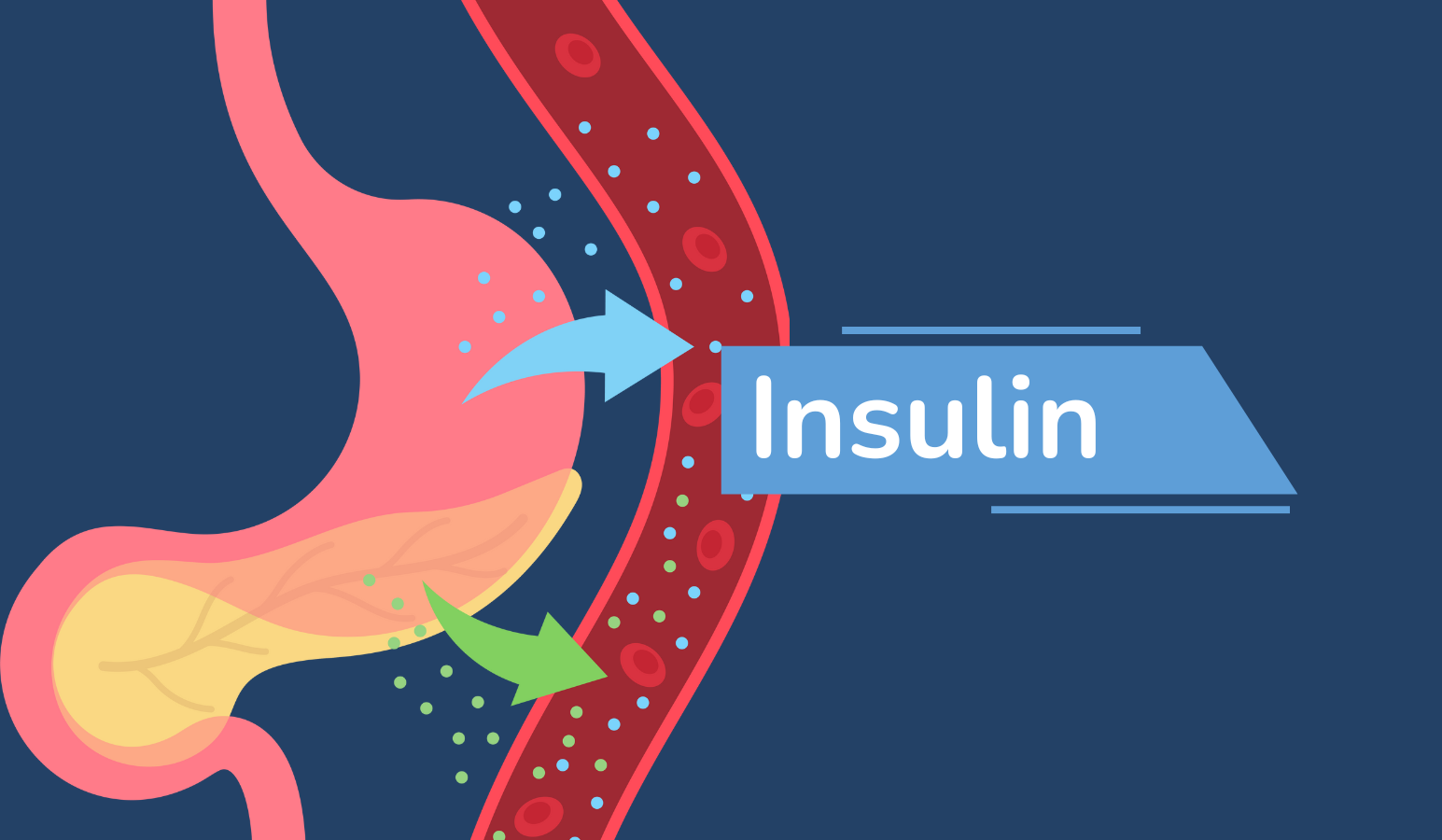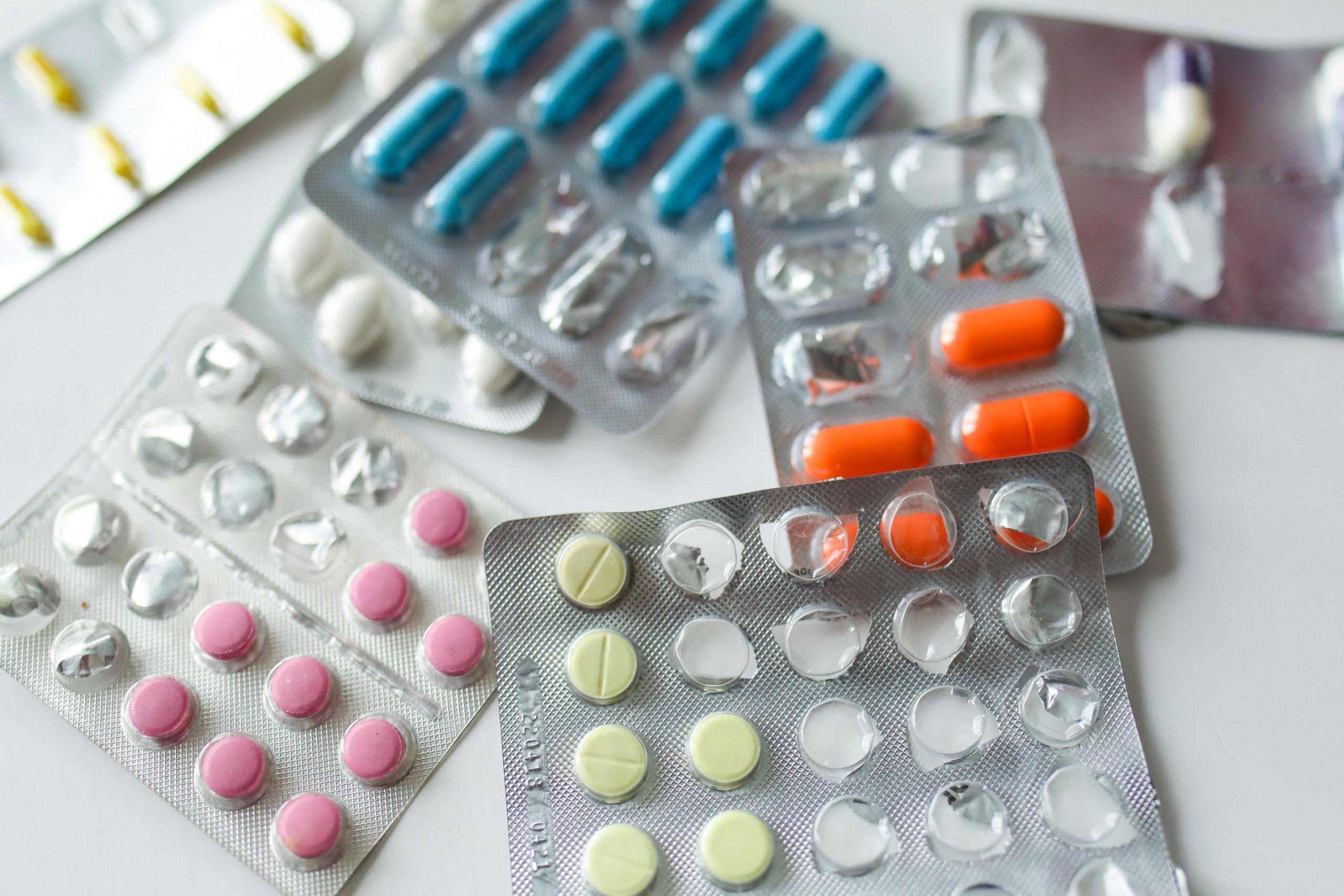Insulin is the hormone that keeps our blood sugar (glucose) levels in check. It travels through the bloodstream and makes sure our body uses or stores sugar properly, so we have steady energy throughout the day. It is produced by beta cells in the pancreas and stored in small pockets called granules until it is needed. Before insulin becomes active, it starts off as a larger, inactive form called proinsulin. Inside the beta cells, proinsulin is carefully processed into mature insulin and a smaller by-product called C-peptide. This processing is crucial for insulin to function properly
So, how does insulin work?
When we eat, our food is broken down into glucose. This glucose enters the bloodstream and as a result the blood sugar levels rise, the pancreas responds by releasing insulin in the bloodstream. Once in the bloodstream, insulin travels to different parts of the body and binds to specific docking sites called insulin receptors on the surface of cells. You can think of insulin like a digital passcode that “unlocks” doors (called glucose transporters) on the cells. Once these doors open, glucose can enter the cell, where it is either used immediately for energy or stored for later use.
Insulin acts on several key tissues, especially the liver, muscles, and fat. In the liver, insulin encourages glucose storage in the form of glycogen. In muscle and fat cells, it helps move sugar out of the bloodstream and into the cells, and it also supports the building of proteins and fats.
Why is insulin balance so important?
Maintaining glucose levels in the body is like keeping a see-saw balanced. When blood sugar rises on one side, the weight tips. Insulin steps in on the other side to bring things back into balance. This back-and-forth action is essential for normal body function, preventing harmful spikes and lows in blood sugar. Prolonged high blood sugar levels, called hyperglycemia, can damage blood vessels, nerves, kidneys, and other organs.
Our cells need glucose for energy, and insulin is the messenger that helps glucose get inside. If the pancreas does not produce enough insulin or if the body stops responding to it properly, cells cannot absorb glucose effectively. This causes blood sugar levels to rise. This is what happens in type 1 and type 2 diabetes. In type 1 diabetes, the immune system mistakenly attacks and destroys beta cells, stopping insulin production altogether. In type 2 diabetes, the body’s cells may be insulin resistant, making it harder for glucose to enter cells, and there may not be enough insulin to overcome this resistance.
The takeaway?
Insulin is essential for helping the body use glucose as fuel. When this system works well, our body runs smoothly. When it does not, it can lead to serious health issues like diabetes. Understanding how insulin works is key to understanding how to support better long-term health.
This article was developed in partnership with Diabetes Action Canada as part of the Canadian National Graduate Course in Islet Biology and Diabetes hosted by the University Toronto (BCH2140).



